
In a few years, the International Space Station will be the ultimate lost civilization.
Sometime after 2030, a SpaceX ship will pull the ISS into Earth’s atmosphere, where heat and friction will break it apart. A space station the size of a football field, where spacefarers from 22 countries lived and worked for (by the time it’s all over) about 30 years, will be effectively erased from existence.
A lot of human culture is wrapped up in the things we make and use, and in how we interact with our environments. And once the ISS burns up in the upper atmosphere, the physical evidence of its spacefaring culture will just be gone.
Archaeologists, led by Flinders University archaeologist Alice Gorman and Chapman University archaeologist Justin Walsh, are trying to study the soon-to-be-lost culture of the ISS and its crews before it’s gone. In a recent study, Gorman, Walsh, and their colleagues asked astronauts to take regular photographs of six square sections of walls and surfaces aboard ISS, revealing clues about how people on the station used their space and adapted to the weird environment of an orbiting space station. The result is simultaneously a record of a place and culture that will soon vanish and a source valuable data to help engineers design future space stations.
The researchers published their work in the journal PLOS ONE.

The ISS is in an unusual place and has a tiny population. So far, fewer than 300 people have ever visited the station, for trips ranging from a few days to over a year. But life aboard the ISS has its own traditions, its own etiquette, and its own quirks and habits. According to Walsh and his colleagues, the station is a micro-society with its own culture.
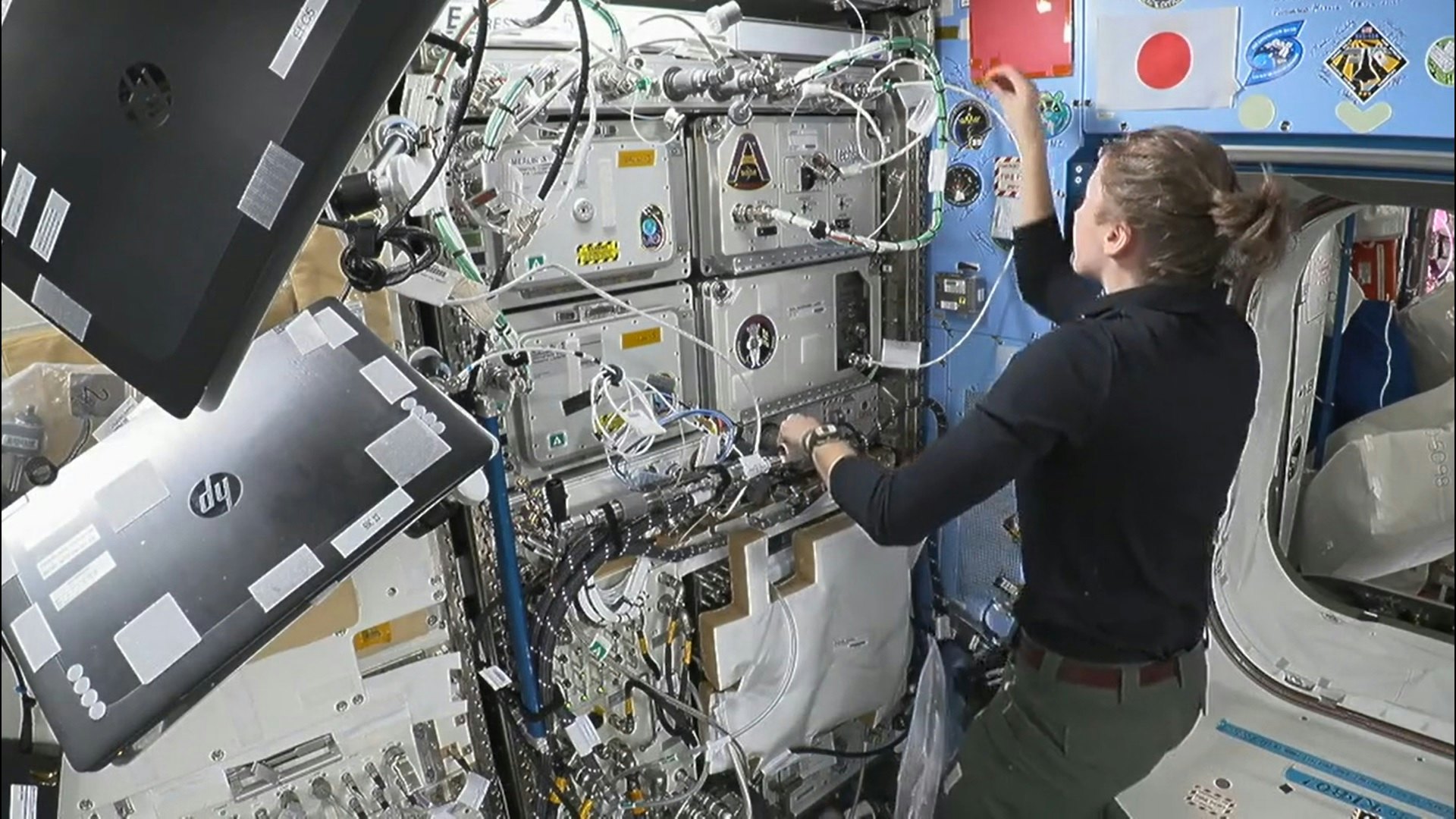
In this image, astronaut Kayla Barron uses tape to mark the corners off a square on one of the station’s walls. For 60 days in early 2022, astronauts aboard the ISS took regular photos of six squares like this one, on walls and surfaces around the station. Walsh and his colleagues used the photos to track which objects people used and stored in different places. That, in turn, offered clues about how people lived and worked in different parts of the station.
Here on Earth, the story of who lived in a place, and what they did there, is encoded in layers of objects left behind and buried in layers of dirt. Archaeologists call this “material culture”: the physical stuff left behind by people. Archaeologists get to that evidence by digging in the ground, but also by using satellite or aerial surveys to look for structures that have been buried or hidden by plant growth. On the ISS, archaeologists can get information about the station’s material culture through photos.
For Walsh and his colleagues, each square aboard the ISS is like a “test pit,” a small hole that archaeologists dig to sample the layers of soil and artifacts at a site on Earth. And each day’s photo is like equivalent of a new layer of dirt and artifacts, showing what people did in that space over a period of time.
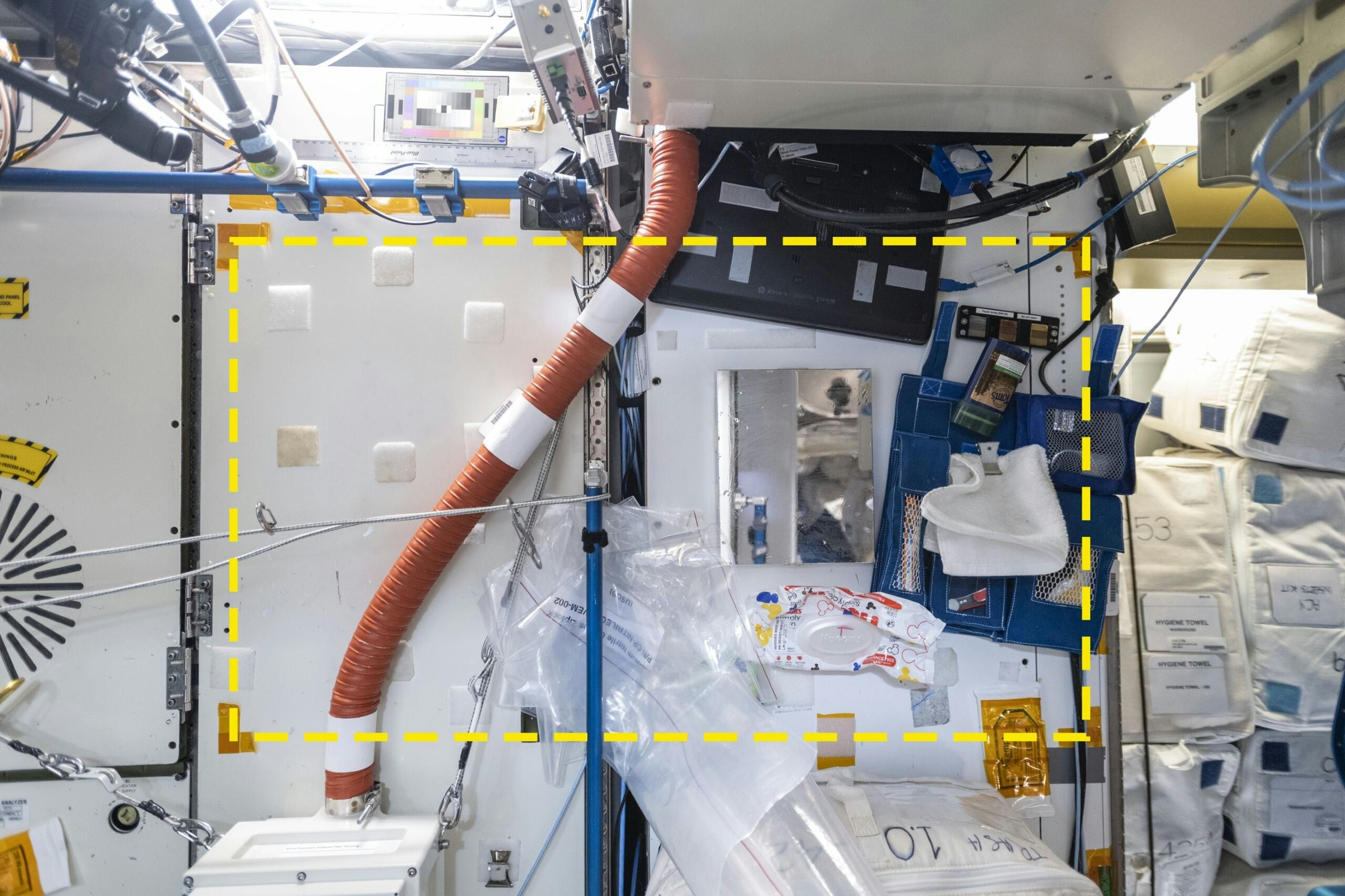
While archaeologists on Earth might look for stone tools, the charred remains of cooking hearths, or radar traces of ancient canals and fortifications, space archaeologists might look for other things that reveal people’s habits: hygiene gear stuck to a random wall near the toilet, for instance. They might also study objects like plastic clips or strips of velcro used to hold objects in place (a category of things Walsh and his colleagues call “gravitational proxies”).
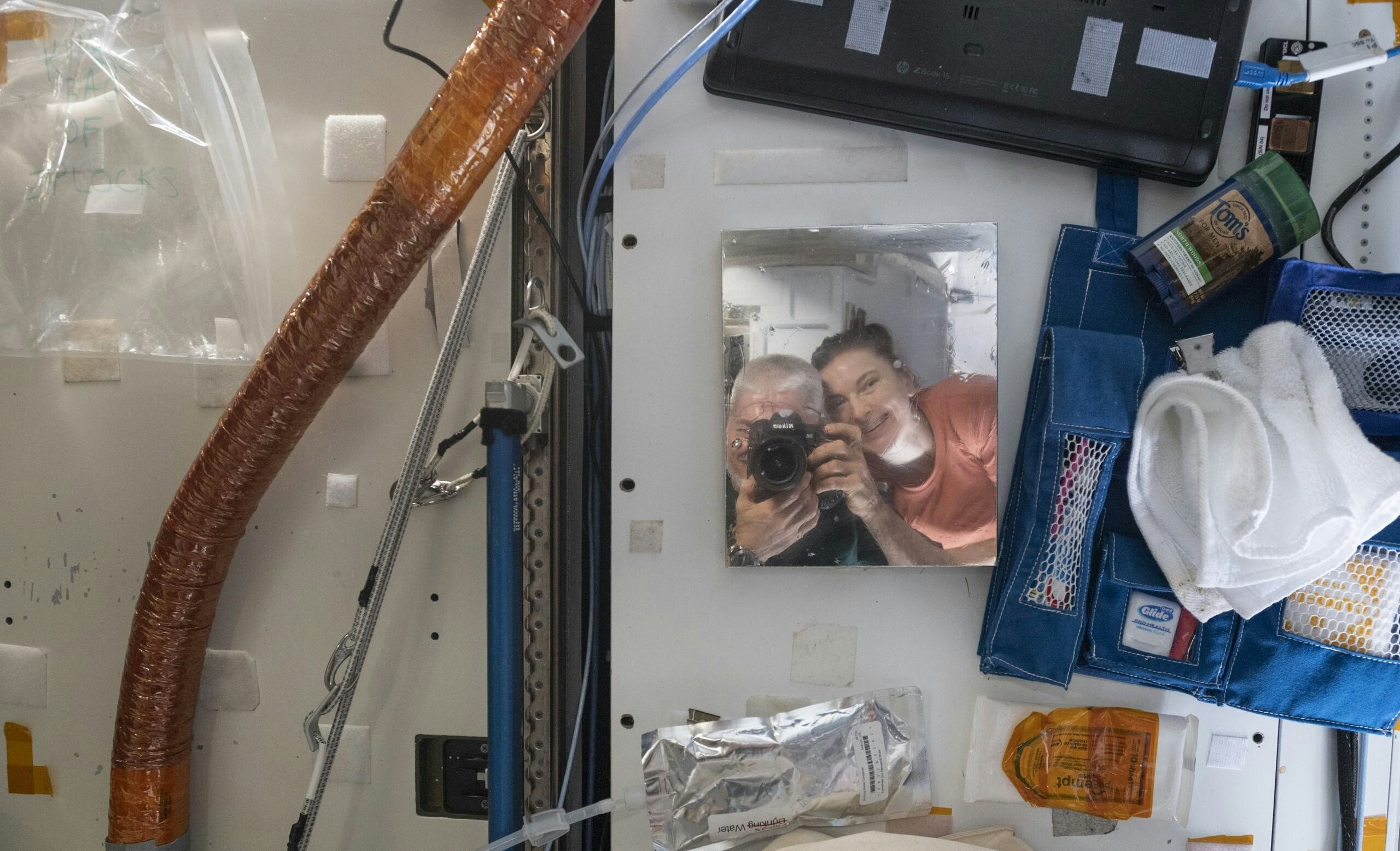
It turned out that over the years, crews have started using some empty spaces for convenient storage — like a wall between the exercise equipment and the toilet compartment. The wall had no official purpose, but crews started using it to store their toiletries and hygiene supplies, probably just because the location was convenient, thanks to being so close to the toilet.
“If you look at older historic photos of that same location, it doesn't have the same things that it had when we were looking at it. I think the Google Street View virtual model of the ISS that wall actually has a tool kit stuck on the wall; it didn't have that at all when we were looking at it,” says Walsh. “So it's it's this area that can be malleable in terms of its function, depending on what the astronauts, who are the current crew, want to do with it.”
That’s the kind of detail Walsh says we still need archaeology to unearth, because it tends to be left out of official station plans and even astronaut’s biographies — if only because it’s the kind of detail that people seldom think to mention. And it could be important in planning future space stations.
“One of the themes that has emerged throughout our project is a need for increased crew autonomy: Having some sense of control over your context, like how to decorate it or where to carry out certain activities,” says Walsh.
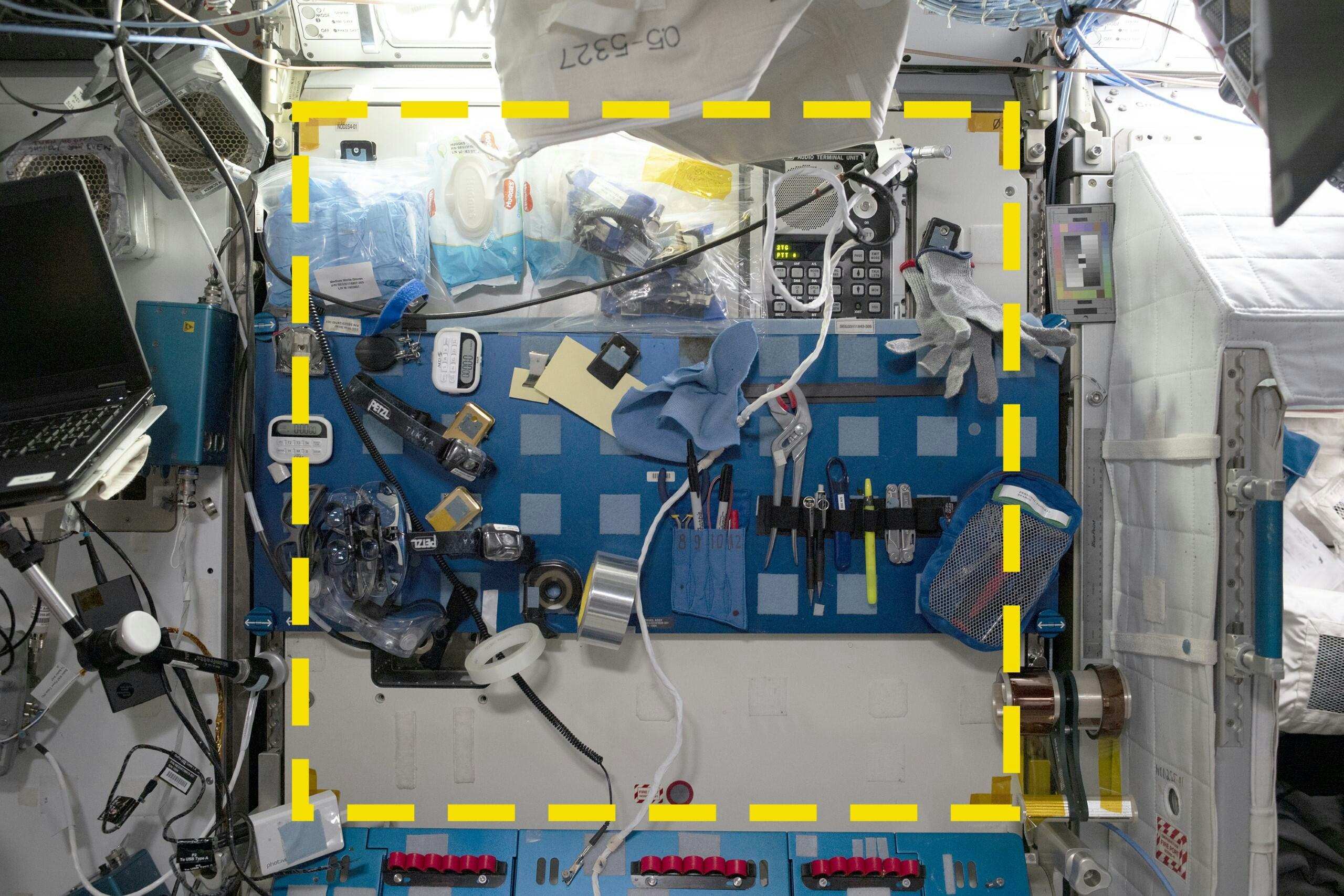
Another “test pit” revealed that what was designed as a maintenance area had actually turned into a storage space. Walsh and his colleagues found no trace of actual work happening in the space, but lots of stored equipment.
“There were lots of objects, but as it turned out, those objects didn't move around a lot,” says Walsh. “They basically stayed static, and that was what led to the interpretation of this as a storage area.”
That kind of information is useful not only for understanding space station culture, but for helping design future stations to line up better with what people actually do and how they actually use their space in orbit.
“During debrief, one of the crew said they liked the idea that looking at these locations systematically over time could lead to better space stations,” says Walsh. “They understood that observing the material culture of the space station could lead to insights that otherwise people hadn't had.”
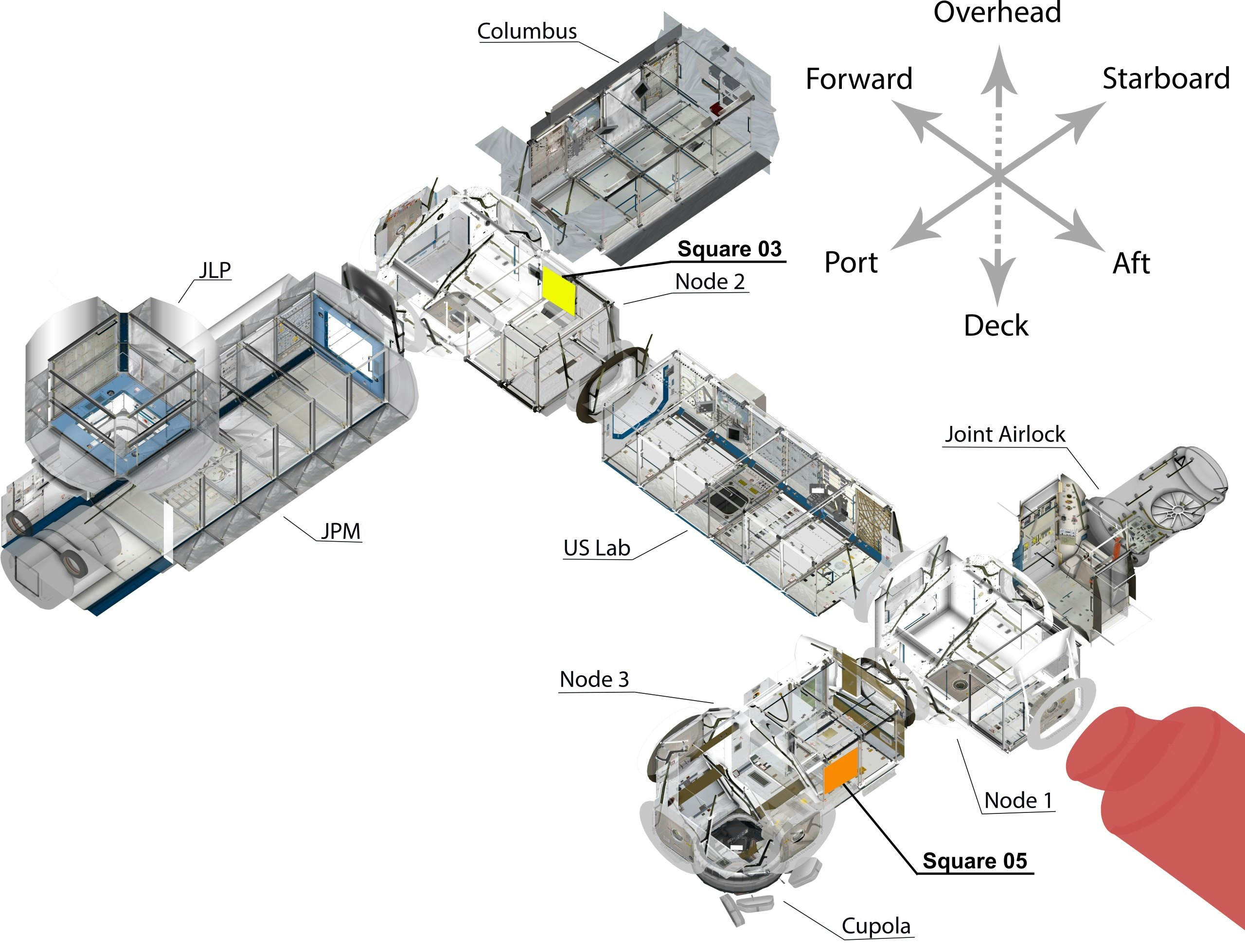
The ISS Archaeology Project team are still working through the data from the other four “test pit” squares, located on experiment racks in the Japanese Experiment module and the European Laboratory Module, a wall near the galley table, and a workstation in the U.S. Laboratory Module.
“The galley is probably the one that people want to know the most about,” says Walsh.
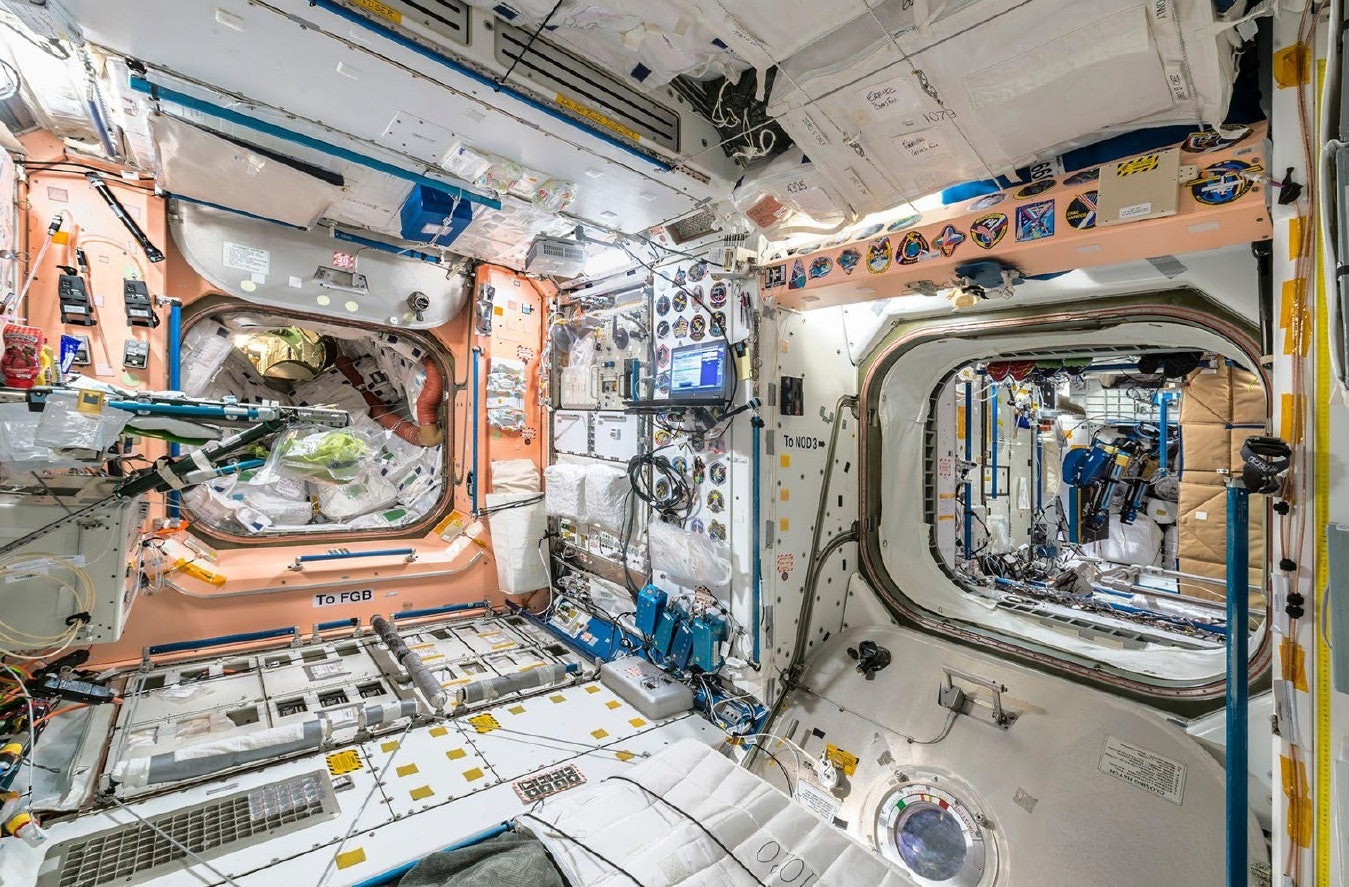
An earlier study focused on where station crews actually spend their time aboard, based on where they were seen in the thousands of photos that have been taken over the last 24 years. The International Space Station is supposed to be exactly that — international — but each module is owned by a particular country’s space agency. And it turns out that crew members spend most of their time in their own country’s modules.
That’s especially for Russian cosmonauts, who almost always appeared in the Russian modules — where crew members from other countries were very rarely seen.
The latest study showed the same thing. The maintenance area that the astronauts repurposed for storage is in an area that connects that U.S., European, and Japanese modules. And true to form, Walsh and his colleagues spotted just one Russian artifact, a pack of sanitary wipes, tucked into a hygiene kit. That’s the kind of physical evidence that tells archaeologists about who is using a space — and who isn’t.
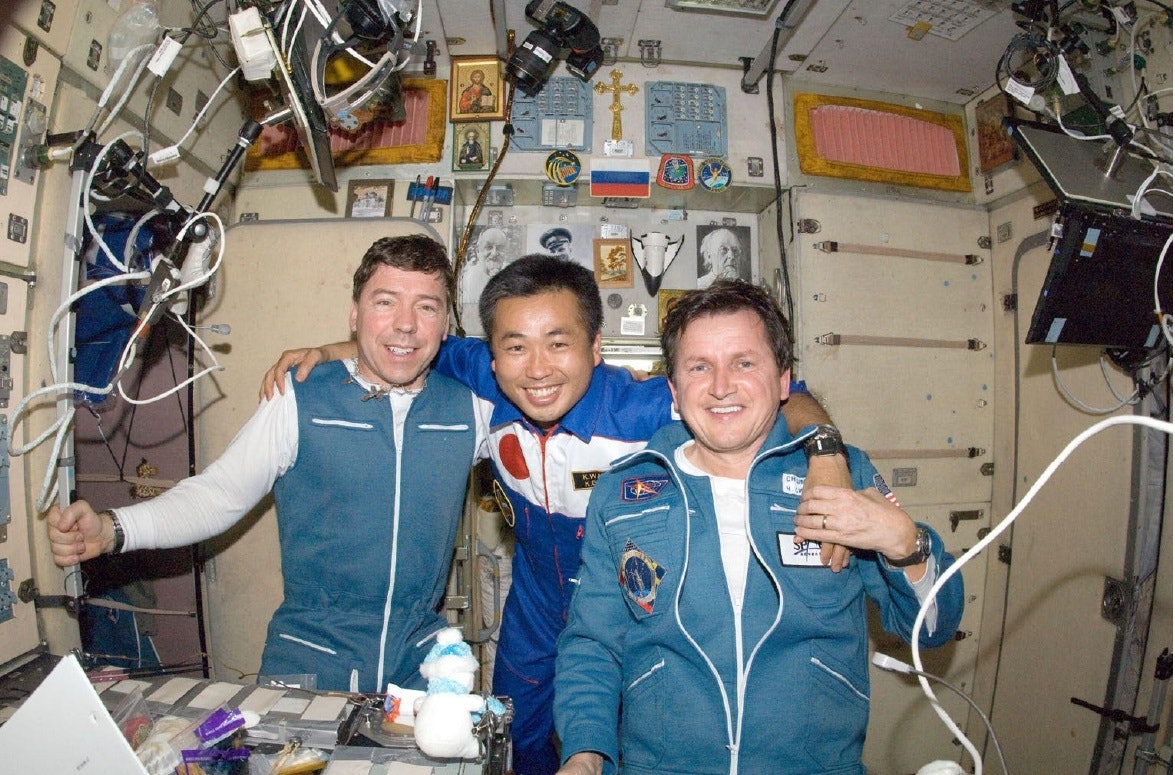
In 2021, Walsh and his colleagues used some crew member photos to study how the crew decorated the walls of their station modules. In the Russian module, though, cosmonauts adorned the walls with religious icons, paintings of Russian political leaders, and above all, photos of cosmonaut Yuri Gagarin, the first human in space.
The aft wall of Russia’s Zvezda module also featured a framed photo of Yuri Gagarin. And even older photos from the Mir space station and the Salyut-7 space station show that Gagarin’s photo has been part of station décor for Russian cosmonauts for decades. It’s a way for the current ISS crew to show that they’re connected to a much older spacefaring culture.
In the U.S., European, and American modules, crews tend to decorate public areas with mission patches, name tags and photos of former crew members (and a geocaching tag). Walsh says all of this ties ISS crews not only to older generations of space explorers, but to the very first humans to draw and paint on cave walls tens of thousands of years ago.
“It’s like your refrigerator door with your kids drawings on it, or photos from your vacation that you put there; this is how we can both make comments about who we feel we are, and also to reinforce key elements of our identity,” says Walsh. “That’s what I mean by ‘people in space are people.’ Humans are gonna human.”







